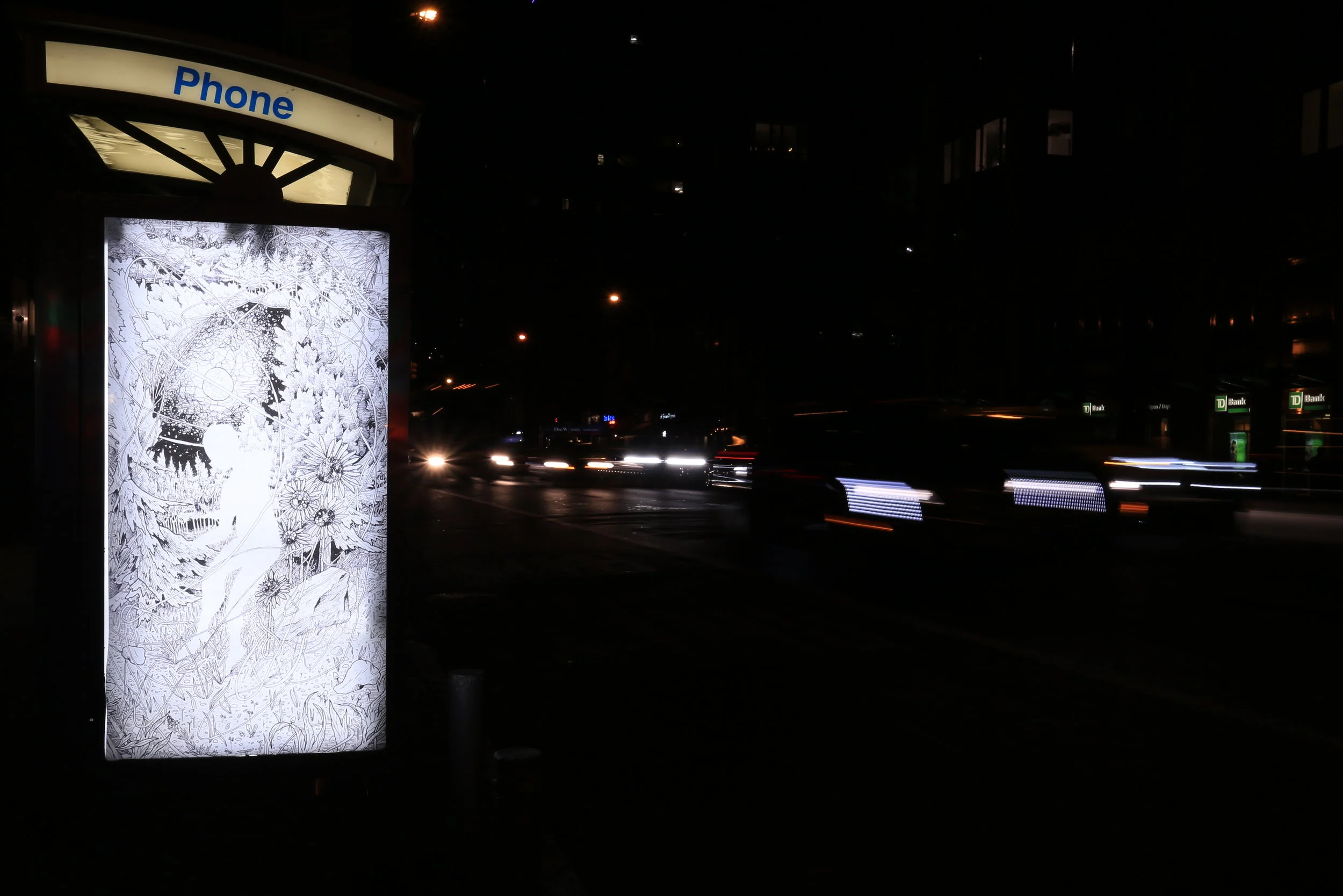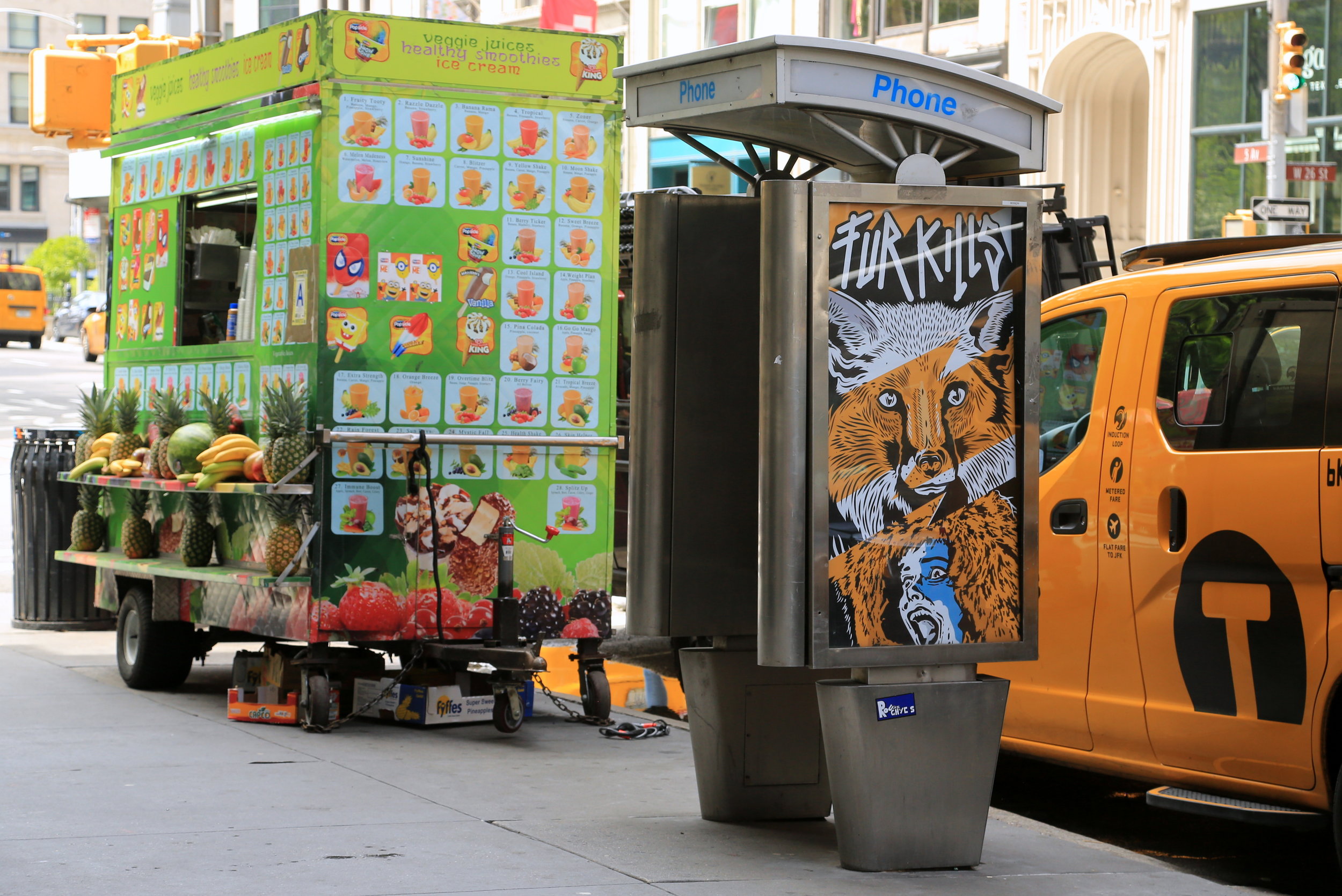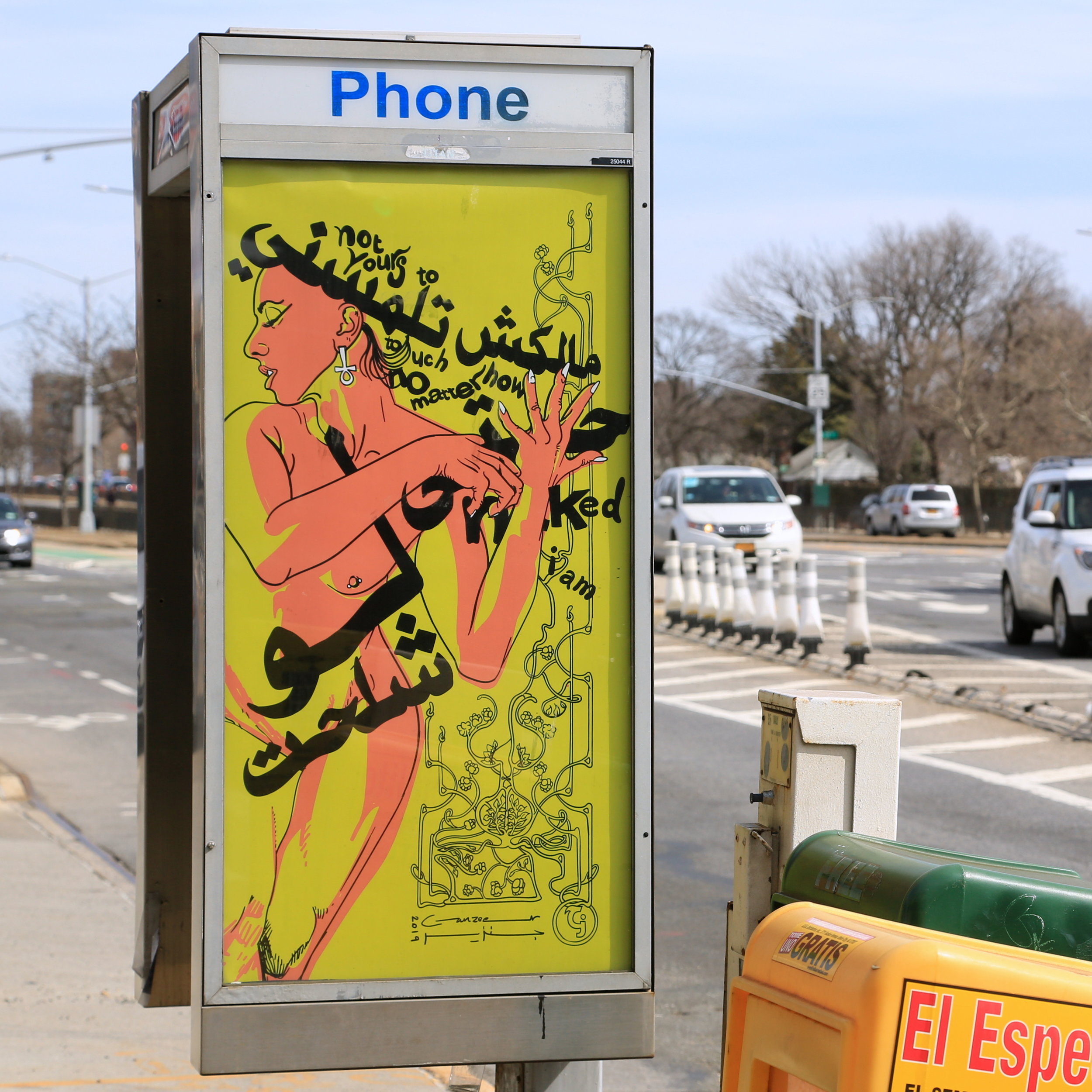Fox Fisher for Art in Ad Places. Photo by Luna Park.
This week, for the culmination of Pride and the 50th anniversary of the Stonewall Uprising, we teamed up with our friend Daniel Albanese, better known as The Dusty Rebel, for a series of seven ad takeovers. Each poster is by an LGBT+ street artist, and they all address LGBT+ concerns.
And who but Dusty could guest curate this series for us? He’s the man behind the upcoming Queer Street Art documentary, and there is probably nobody who has a better handle on that particular sub-category of street art. On very short notice, Dusty was able to assemble an internationally-sourced suite of posters by Aloha, Fox Fisher, Jeremy Novy, Jess X. Snow, Lésbica Feminista, Paul Harfleet's The Pansy Project, and Suriani. Additionally, thanks to Dusty’s advice, we were able to install this entire series in sites of importance for LGBT+ history: Across the street from the Stonewall Inn, a stone’s throw from historic piers, down the street from the country’s longest-standing lesbian bar (Henrietta Hudson in the West Village)…
Why put up this series now? Fox Fisher hits the nail on the head, in explaining why he contributed the design that he did, “Being part of Art in Ad Places is special because it provides a platform to 'sell' something much more real, to be able to touch people when they least expect it. I chose to highlight that Pride Is A Protest because it's 50 years since the Stonewall Riots and in many countries people are still persecuted for their gender identity, expression, and romantic preference.”
Lésbica Feminista for Art in Ad Places. Photo by Luna Park.
Of course, there’s also nothing wrong with the aspect of Pride that is about a joyous representation of LGBT+ people and ideas. In particular, Lésbica Feminista and Jeremy Novy’s works touch on that.
Lésbica Feminista told us, “I contributed this image to Art in Ad Places because I think we should talk/see more about lesbian women and give them/us voice. Lesbians have been underrepresented and marginalized throughout history, so I believe it is important to resignify lesbian images, to bring new meanings and to make these relationships more and more visible.”
And Jeremy Novy said, “I’m taking part in Art in Ad Places—and using blunt, strong, and unmistakably gay imagery—because our media is filled heterosexual images. In recent years, Drag Race has helped popularize a certain side of the gay community, and that's great, but there's a homoerotic side too. It can be confrontational and make the heterosexual male question his masculinity, and I wanted to explore that.”
Jeremy Novy for Art in Ad Places. Photo by Luna Park.
Jess X. Snow’s work is perhaps in a similar vein of celebration and visibility, but with their trademark poetic and personal approach. They told us, “I chose to paint queer, migrant non-binary activist/poet Sonia Guiñansaca and their words so folks in the early journey of exploring gender know that we’ve always been this vast of a cosmos. Thank you also to our LGBTQ+ and non-binary elders who make our lives today possible especially the Black trans women who started the Stonewall riots and made pride possible and queer and two-spirit indigenous folks who have been transcending gender and heteronormativity before settler colonialism ever happened.”
Jess X. Snow for Art in Ad Places. Photo by Luna Park.
Paul Harfleet, the artist behind The Pansy Project, and Suriani both took the opportunity to memorialize members of the LGBT+ community.
Suriani said, “With this piece, I to pay tribute to NYC's LGBT+ artist and activist Marsha P. Johnson. Keeping her memory alive strengthens our community which still struggles with discrimination.”
Suriani for Art in Ad Places. Photo by Luna Park.
Paul Harfleet’s piece is a bit more difficult to summarize, so let’s turn it over to him:
“I have been running my ongoing artwork; The Pansy Project, for almost fifteen years, I plant pansies at sites of homophobia and transphobia around the world. I take a photograph and add the image with the title that quotes the abuse to my website (thepansyproject.com).
“For Art in Ad Places I have quoted part of a page on Wikipedia; ‘History of violence against LGBT people in the United States.’ In a font size just on the brink of readable I have relocated this information in virtual space and brought it to the street. The list is intentionally difficult to read, practically and emotionally and highlights the impossible challenge of capturing every hate crime our LGBTQ+ community experiences on a daily basis. The image of a pansy planted in Washington D.C. commemorates the life of black trans woman, Tyli’a ‘Nana Boo’ Mack, who was stabbed to death in 2009. Her murder does not ‘make the list’ and emphasises the challenge of any full representation of hate crimes against us. The ‘History of violence against LGBT people in the United States’ covers the fifty years since the Stonewall Riots, a culturally significant beginning to the gay rights movement, half a century later the fight against homophobia and transphobia continues.”
Paul Harfleet’s The Pansy Project for Art in Ad Places. Photo by Luna Park.
Finally, a great example of the unexpected power of images. You never know quite how something is going to land, or how it will be embraced. So let’s keep putting those images out there. Of his poster, Aloha said, “This painting—based on a photograph a friend posted to Facebook in 2012—which began as a joke, but over the years has come to represent Pride and Queer Liberation Movement in Italy and Europe.”
Aloha for Art in Ad Places. Photo by Luna Park.
Again, an enormous thank you to Dusty Rebel, as well as all of the artists who saw the value in putting out these messages right now, especially in the format of an ad takeover. As the saying goes, “Be gay, do crime.” Let’s have more queer art, by queer artists, in queer space (and in all spaces).
















